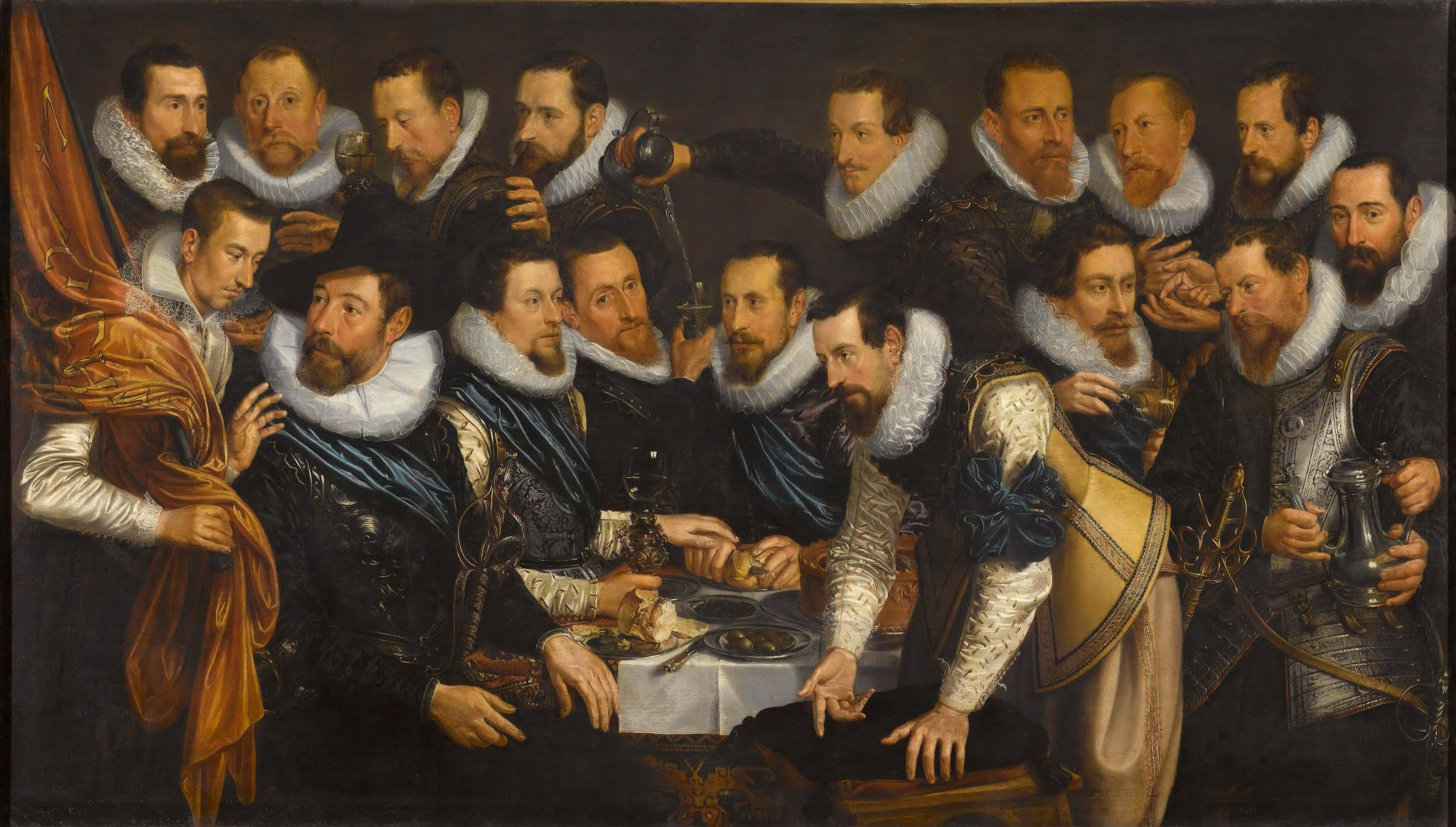Especially Not with a Looming Confucius Institute in the Picture!

Published on Mediums Age of Awareness
Recently I contacted a law firm specializing in non-profits about forming a 501(3)©, which can function as a fiscal sponsor as I described in How Marxian Indoctrination Sustains The Great Wealth Divide. It was through the process of writing that I came to the realization that Andersen Design is ideally suited to create a new fiscal sponsorship model, or adapting existing ones, to benefit the maker first as opposed to the investment community first, relegating the producer and researcher to a secondary cause.
It was a fine conversation but the law firm is beyond my budget at an estimated cost of $22000.00 to help with the legal formation of a non-profit museum. I did not get to explore whether they are significantly motivated by the social and creative act of developing the model of fiscal sponsorship to benefit the makers and researchers. I was talking to the person who fields the calls and I was also fielding the potential expense as the information I wanted to clarify with my first call. Given those parameters, the call was more engaging than anticipated,
As is to be expected it was said that it would be easier to find a fiscal sponsorship than become a 501(3)(C)Museum that is itself a fiscal sponsor, but in fact, it is not easier, as I explained that there is only one existing fiscal sponsor for makers that I have been able to locate, just as there was only one bureaucrat governing the SBIR grants.
More on that later. On the local community front, in Boothbay, Maine, the local newspaper, announced a drawing board plan for a forty-nine million dollar school system, which also included “accepting unconditional donations to fund the approximately two and a half million phase, establishing a building committee which will solicit an architectural firm and, after the design is done, set a CSD-wide referendum”.
I am opposed to this plan as it seems, and indeed is spoken about, as a gentrification plan, without much discussion about education and contextual issues, such as the fact that the Boothbay Peninsula has a very small number of young people. Therefore it is presented as if it is a plan to attract families with young people to the region, as opposed to serving the interest of an existing populous. Paul Coulombe, the pro-active private developer, makes the point that the people who work at Bigelow labs do not live in the region, and suggests that building a forty-nine million dollar school system will encourage them to do so. Could it be that the rising costs of real estate, driven by the tourist industry that Coulombe has been aggressively pushing toward becoming a wealth elite destination, is a reason why the cost of first home housing is not competitive? Perhaps the workers at Bigelow labs find it a fair trade-off to travel a short distance every day in order to get a better deal on a property in a surrounding town. The expenses that our gentrification cult keeps coming up with every six months is not helping to make housing affordable and this is the most massive expense introduced yet.

There is no real plan for financing the forty-nine million dollar expense. Coulombe mumbles on about doing a non-profit fundraiser but even he, when asked, admitted that he did not anticipate that fundraising would come close to footing the bill. Looming in the background is the Confucius Institute at the University of Maine, owned, funded, and operated by the Chinese Government. The Confucius Institutes have been on a human rights and national security watch for years. Today some states are closing the Confucius Institutes, while others are expanding them to K-12 schooling, with funding from the Chinese government.
Behind this push for an expensive school system, is a questionable attitude that easily falls from the tongues of the proponents in their manner of assuming that all our local communities are in competition with each other. At the same time that I am listening to this conversation, I am reading Lewis Mumford, a favorite influence in my Dad’s thinking. Mumford is not as well known as Karl Marx and so it was not easy to find his works online, but I found a full PDF version of the Culture of the Cities, which begins with the Medieval City. I am up to the Baroque City, a centralized culture that Mumford detested and does not hold back on saying so.
One of Mumford’s point is that in the 17th city, the capital city was grown at the expense of everywhere else:
The state grew at the expense of the component parts: the capital city grew out of all proportion to the provincial cities, and in no small measure at their expense. Though natural capitals were usually situated at points of special advantage for trade and military defense-these being elements that entered originally into their selection-the baroque rulers brought all the powers of the state to bear to confirm these advantages. Where a natural center was lacking, they imitated at a distance Peter the Great’s colossal willfulness in the founding of St. Petersburg. Lewis Mumdord- the Culture of the Cities
This, along with other passages about the baroque city makes a fitting picture of attitudes found by a certain class of people in Boothbay, who fancy themselves to be economic development leaders but they are really only gentrification developers.
Mumford likes the Medieval city much better than what followed because it was a more egalitarian culture.
Dropping the town competition angle, and taking a wider view, a school of the expense being proposed makes more sense as a regional school located in the town with the most pre-existing young people, not the town with the fewest.
A regional location would draw support and funding from a wider base. It would be much better for the kids to be exposed to a larger more diverse culture and economic strata than the location of a school on the Boothbay Peninsula permits. Located on the peninsula, the school would raise the property taxes and move Boothbay further in the direction of being an exclusive community for the wealthy only. The gentrification cult tells us that the increased property taxes will allow the town to build affordable housing conjuring up visions of an upstairs-downstairs community, but what is missing is this picture is the same thing that was missing in the picture of the baroque city, as Mumford pointed out:
Truth is that something vital had been forgotten in the culture of the baroque gentleman ; and it was naturally missing from the cities he conceived and executed. What was this element-religion? Not in externals, for in sheer mass of building the Church continued to occupy an undiminished place in the city. What was lacking in this scheme was suitable provision for work. No interest in labor as such : hence no suitable provision for the workplaces of industry, or even for the counting houses of the merchant, on the city plan
Are new residents supposed to move to Boothbay to live in affordable housing so that the kids can attend an expensive school? Then what? The young still move away because there is no culture to encourage them to stay?
Instead of making people move to where the school is, why not put the school where the kids are? Why spend a fortune on a gamble? Why not at least start by placing an expensive school in a location where it can draw on the largest base of existing students?
And why are we trying to overcrowd our peninsula? For increased property taxes? Overcrowding was one of the main causes that destroyed the natural balance and equitable culture of the medieval city.
The proposed school will teach the state agenda, being that the Maine Legislature has jurisdiction over all public education in Maine and uses it in the interests of the State’s targeted industrial sector, like development a corporation. That means teaching the skills that are being favored everywhere, demanded by new technology. Imagine that school located close to Boothbay but off the Peninsula.
Now imagine a Museum of American Designer Craftsmen being located in Boothbay, and that it has a purpose that allows it to serve the historical functions that a museum served for the historical cottage industries, celebration and recognition, education, including making education, and economic development. Imagine a community of makers growing through the presence of the museum, an occupation that attracts all ages. That is industry, which can engage more industry and an industrial spirit and culture, and creates an identity beyond your everyday megalopolis.

